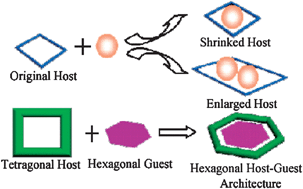Molecular miscibility characteristics of self-assembled 2D molecular architectures
Abstract
Various molecular networks, stabilized by hydrogen bonds or van der Waals interactions, are demonstrated in which the distribution of heterogeneous molecular species could be controlled at the level of single molecules or molecular clusters. The observed miscibility characteristics of the two-dimensional (2D) assembly structures could enable studies on the heterogeneous molecular interfaces of guest–host architectures. In addition, it could be envisioned that large cavity networks should be beneficial for studying the clustering behavior of molecular aggregates of similar or dissimilar species, chemical interactions in nanometre scale constrained areas, as well as the design of complex molecular architectures.


 Please wait while we load your content...
Please wait while we load your content...